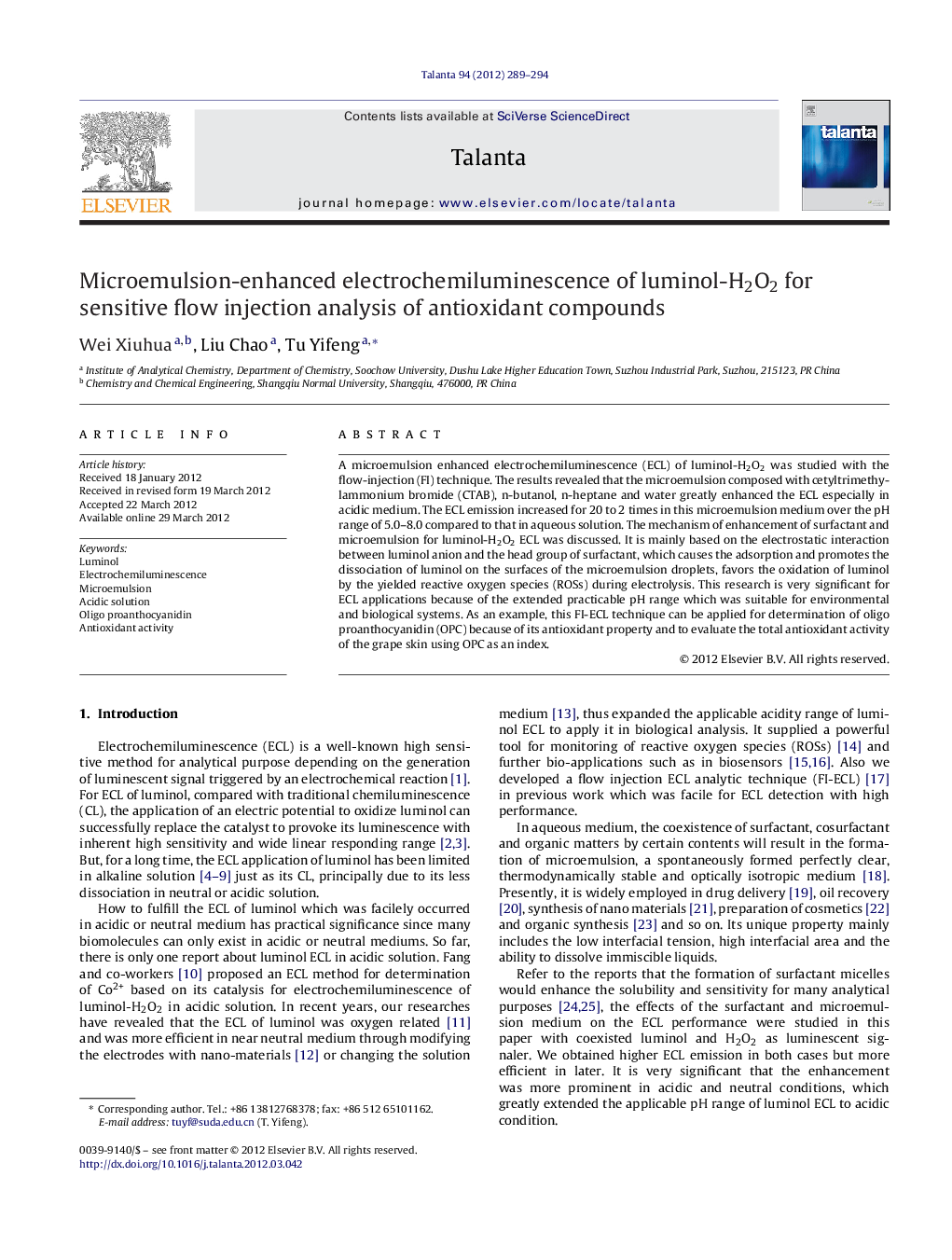| Article ID | Journal | Published Year | Pages | File Type |
|---|---|---|---|---|
| 1245650 | Talanta | 2012 | 6 Pages |
A microemulsion enhanced electrochemiluminescence (ECL) of luminol-H2O2 was studied with the flow-injection (FI) technique. The results revealed that the microemulsion composed with cetyltrimethylammonium bromide (CTAB), n-butanol, n-heptane and water greatly enhanced the ECL especially in acidic medium. The ECL emission increased for 20 to 2 times in this microemulsion medium over the pH range of 5.0–8.0 compared to that in aqueous solution. The mechanism of enhancement of surfactant and microemulsion for luminol-H2O2 ECL was discussed. It is mainly based on the electrostatic interaction between luminol anion and the head group of surfactant, which causes the adsorption and promotes the dissociation of luminol on the surfaces of the microemulsion droplets, favors the oxidation of luminol by the yielded reactive oxygen species (ROSs) during electrolysis. This research is very significant for ECL applications because of the extended practicable pH range which was suitable for environmental and biological systems. As an example, this FI-ECL technique can be applied for determination of oligo proanthocyanidin (OPC) because of its antioxidant property and to evaluate the total antioxidant activity of the grape skin using OPC as an index.
► Microemulsion enhanced electrochemiluminescence of luminol-H2O2. ► Extend the practicability of electrochemiluminescence into acidic solution. ► Determination of antioxidant and to evaluate the scavenging efficiency of grape skin for reactive oxygen species.
